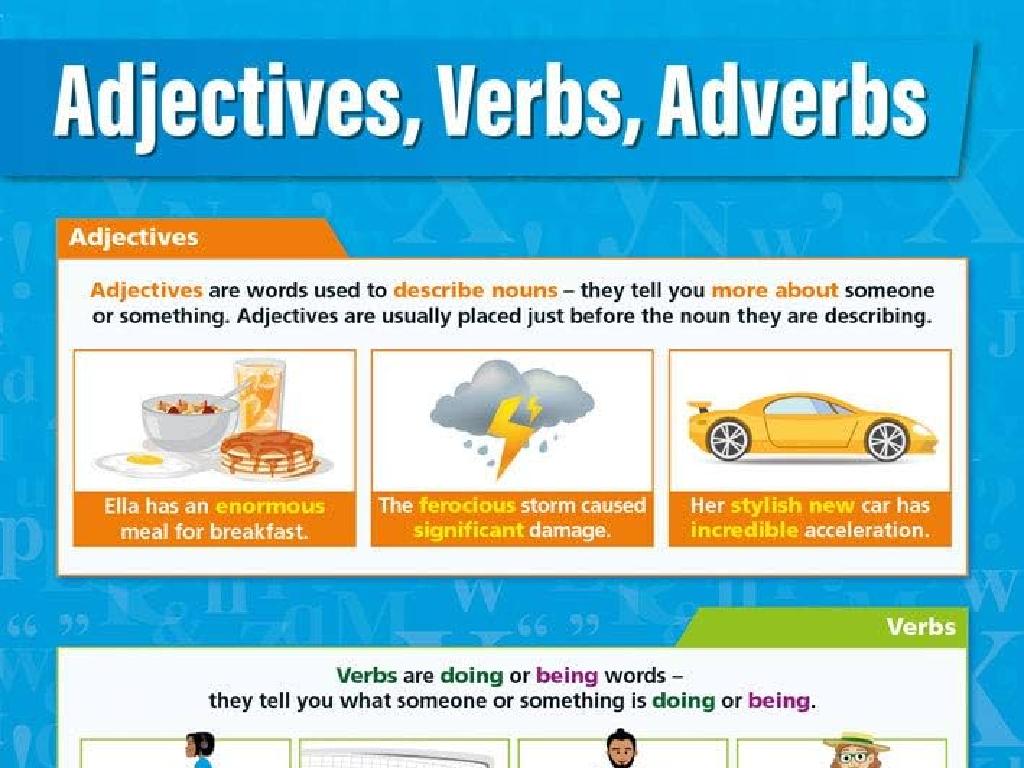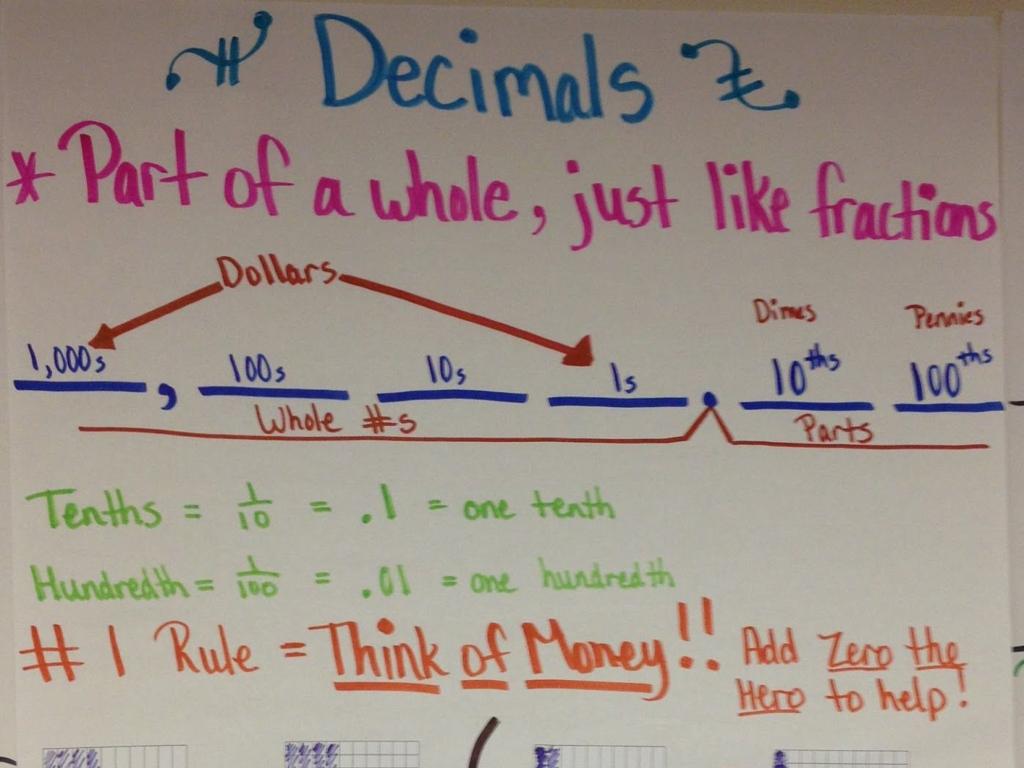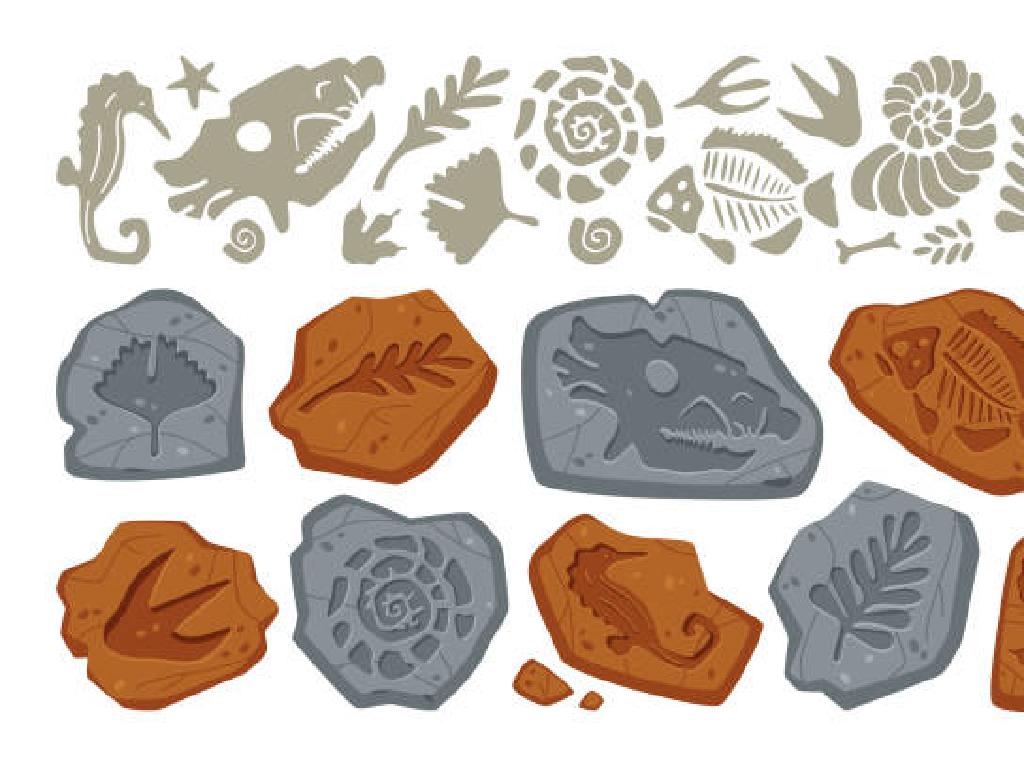Determine The Order Of Events In Informational Texts
Subject: Language arts
Grade: Fifth grade
Topic: Text Structure
Please LOG IN to download the presentation. Access is available to registered users only.
View More Content
Understanding Text Structure
– What is text structure?
– It’s how information is arranged in a passage
– Organizing information effectively
– Importance of event order
– Knowing the sequence helps us understand the timeline
– Enhancing reading comprehension
– Helps in summarizing and predicting text
|
This slide introduces the concept of text structure, which is crucial for students to understand how information is organized in a passage. Explain that text structure can be chronological, cause and effect, problem and solution, or compare and contrast. Emphasize the importance of determining the order of events, as it aids in comprehending the timeline and sequence of a story or informational text. This understanding is key to summarizing the text and making predictions about what might happen next. Use examples from familiar stories or historical events to illustrate how the order of events can change our understanding of the text.
Understanding Text Structure: Sequential Order
– Text structure definition
– How writing is organized
– Types of text structures
– Sequence, Comparison, Cause/Effect, Problem/Solution
– Focus on Sequential Order
– Sequential order arranges information by time
– Recognizing sequence in texts
– Look for signal words like ‘first’, ‘then’, ‘finally’
|
This slide introduces the concept of text structure, which is crucial for understanding how information is presented in writing. Begin by explaining that text structure refers to the way text is organized. Provide examples of different text structures such as sequence, comparison, cause and effect, and problem and solution. Emphasize today’s focus on sequential order, which is often used in informational texts to describe events in the order they occurred. Teach students to recognize sequential order by looking for signal words and phrases that indicate time sequence. Encourage them to practice by identifying these clues in example texts.
Identifying Sequence in Texts
– Recognize sequence clue words
– Words like ‘First’, ‘Next’, ‘Then’, ‘Finally’ signal order
– Search for dates and times
– Dates and times can indicate the sequence of events
– Look for numbered steps
– Steps or instructions in texts are often numbered to show order
– Example: Baking a cake
– Follow a recipe’s steps to see how a cake is made in order
|
This slide is aimed at helping students understand how to determine the order of events in informational texts. Emphasize the importance of clue words such as ‘First’, ‘Next’, ‘Then’, and ‘Finally’, which often signal the sequence in which events occur. Encourage students to look for dates, times, and numbered steps as these can provide a clear indication of the order. Use the example of a cake recipe to illustrate how these elements come together to help someone follow the process step by step. In the next class, consider having students bring in their own examples of sequences from texts they’ve read or providing additional texts for them to practice with.
Why Order Matters in Texts
– Understanding event timelines
– Timelines help us track the sequence of events clearly.
– Comprehension and summarization
– Knowing the order aids in grasping the main ideas and details.
– Avoiding confusion
– Keeping events in order prevents mixing up the story.
– Correct interpretation of texts
– It ensures we understand the text as the author intended.
|
This slide emphasizes the importance of understanding the sequence of events in informational texts. A clear timeline of events aids students in following the progression of ideas and facts, which is crucial for accurate comprehension and summarization. It also helps to prevent confusion that can arise from misinterpreting the order in which things happen. Encourage students to look for signal words such as ‘first’, ‘then’, ‘next’, and ‘finally’ that indicate sequence in texts. Discuss how misplacing events can change the meaning of the text and lead to misunderstandings. Provide examples of texts with clear sequences and have students practice ordering events to reinforce the concept.
Understanding Sequence in Texts
– Read an informational text together
– Identify the text’s event sequence
– List events as they happen in the story
– Discuss the sequence’s role
– Why is the order important for comprehension?
– Comprehend the text’s meaning
– How does knowing the sequence aid understanding?
|
This slide is aimed at engaging students in a practical exercise to determine the order of events in an informational text. Start by reading a short text as a class, ensuring that students follow along. After reading, work together to list the events in the order they occurred. Open a discussion on how the sequence of events helps us understand the text better. Emphasize that knowing the order can clarify the cause and effect, make the information more memorable, and help in summarizing the text. Encourage students to think critically about why authors choose to present information in a particular order.
Group Activity: Crafting Timelines
– Form small groups for the activity
– Pick an event or process to explore
– Consider historical events or natural processes
– Create a timeline of key steps/events
– Use sequence words: first, next, then, finally
– Present your timeline to the class
|
This group activity is designed to help students understand the concept of sequencing in informational texts. Divide the class into small groups and instruct each group to choose an event or process, such as the life cycle of a butterfly or the history of the telephone. Each group will then create a timeline detailing the key steps or events in chronological order. Encourage the use of sequence words to clearly indicate the order. After creating their timelines, each group will present to the class, explaining the sequence they’ve outlined. This will reinforce their understanding of the text structure and improve their ability to determine the order of events. Possible variations of the activity could include creating digital timelines, using arts and crafts to visualize the events, or even acting out the sequences.
Class Activity: Sequence Scramble
– Unscramble the event cards
– Pair up and collaborate
– Discuss with your partner to solve the puzzle
– Decide the right order together
– Use clues from the text to determine sequence
– Present your sequence to the class
|
This activity is designed to help students understand the concept of sequencing in informational texts. Provide each pair with a set of event cards related to a topic they have recently studied. The cards will be out of order, and students must work together to place the events in the correct sequence. Encourage them to look for keywords that signal chronological order, such as ‘first,’ ‘then,’ ‘next,’ and ‘finally.’ After they have completed the task, each pair will share their sequence with the class and explain the reasoning behind their choices. This will foster communication skills and reinforce their understanding of text structure. Possible variations of the activity could include using different topics for each pair or having a competition to see which pair can correctly sequence the events the fastest.
Wrapping Up: Event Order & Homework Task
– Recap: Why event order matters
– Homework: Find a news article
– Choose an interesting current event article
– Identify the article’s text structure
– Look for clues: chronological, cause/effect, etc.
– Write the events in sequence
– List events as they happen in the article
|
As we conclude, remind students that understanding the order of events helps in comprehending the full story in informational texts. For homework, students should find a recent article and discern its text structure, which could be chronological, cause and effect, or another format. They should then write down the sequence of events as presented in the text. This exercise will reinforce their ability to identify text structures and understand content organization. In the next class, be prepared to discuss different structures found and how the order of events can change a reader’s understanding of the text.





